Trello is a powerful project management tool, but sometimes you need to take your data to the next level. Exporting your Trello boards to Excel unlocks advanced analysis, reporting, and backup capabilities.
In this guide, we’ll cover three methods for getting your Trello data into Excel:
- Coefficient integration for automated, ongoing syncing
- Manual CSV export for one-time snapshots
- Zapier automation to export on a schedule
Let’s dive in.
Exporting Trello to Excel with Coefficient
Coefficient is a no-code solution that connects 50+ business systems to spreadsheets. With Coefficient, you can automatically sync Trello data to Excel for reporting, analysis, backup, and more.
Pros and Cons
Pros:
- No-code setup process
- Real-time, automated data syncing
- Supports multiple data sources beyond just Trello
Cons:
- Some advanced features, such as scheduled automations, are only available on paid plans. However, Coefficient’s pricing is still very competitive compared to other solutions.
Step-by-Step Tutorial
Step 1. Install Coefficient
- Open Excel from your desktop or in Office Online. Click ‘File’ > ‘Get Add-ins’ > ‘More Add-Ins.’
- Type “Coefficient” in the search bar and click ‘Add.’
- Follow the prompts in the pop-up to complete the installation.
- Once finished, you will see a “Coefficient” tab in the top navigation bar. Click ‘Open Sidebar’ to launch Coefficient.
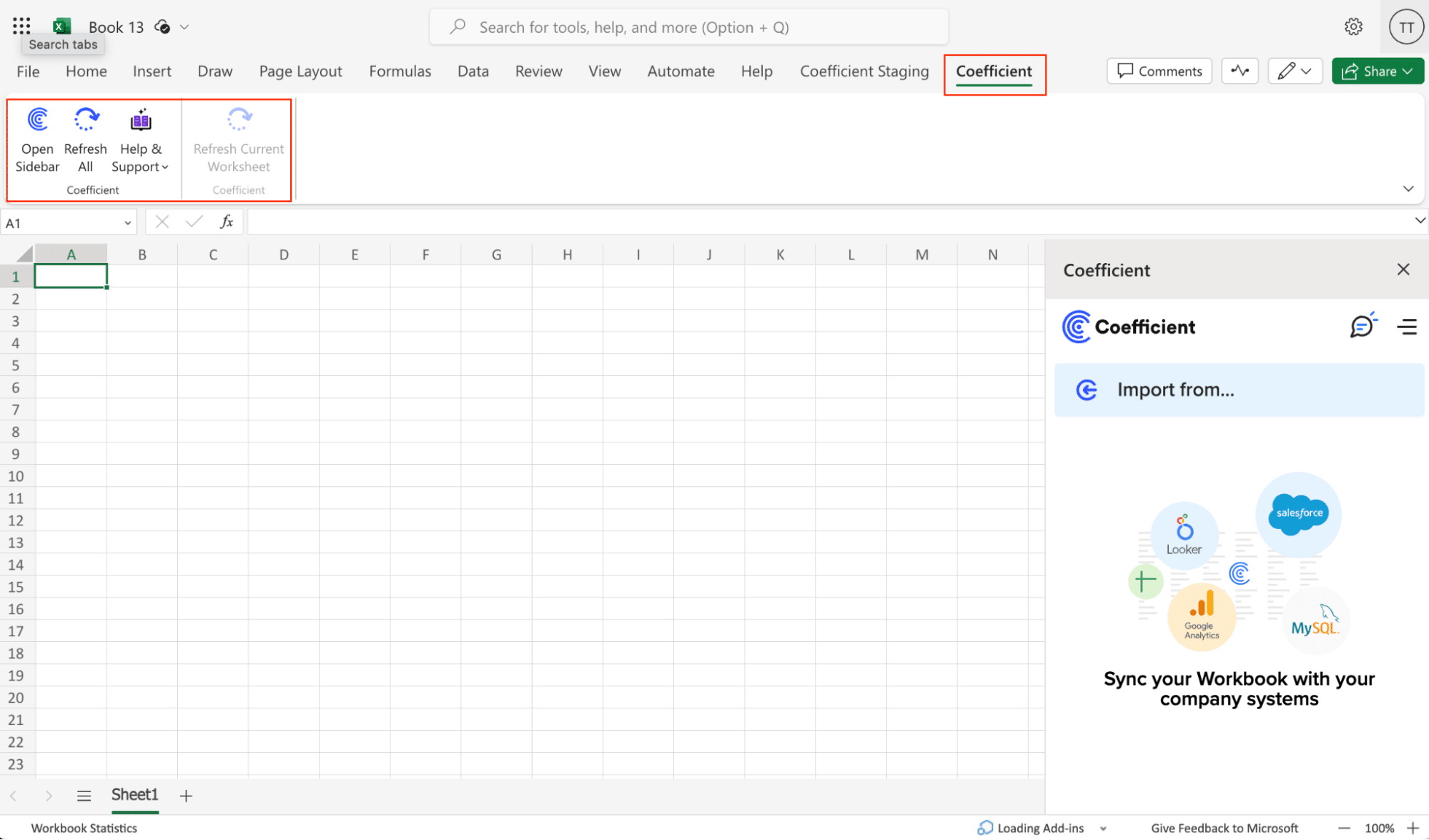
Step 2: Connect Trello as a Data Source in Coefficient
Click ‘Import from…’ from the Coefficient menu.
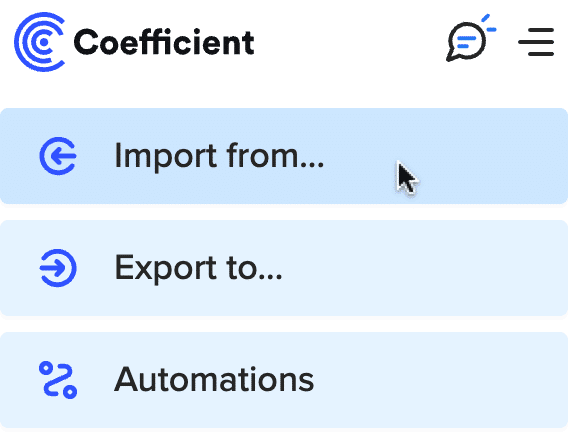
Navigate down the menu to find Trello. Click ‘Connect.’
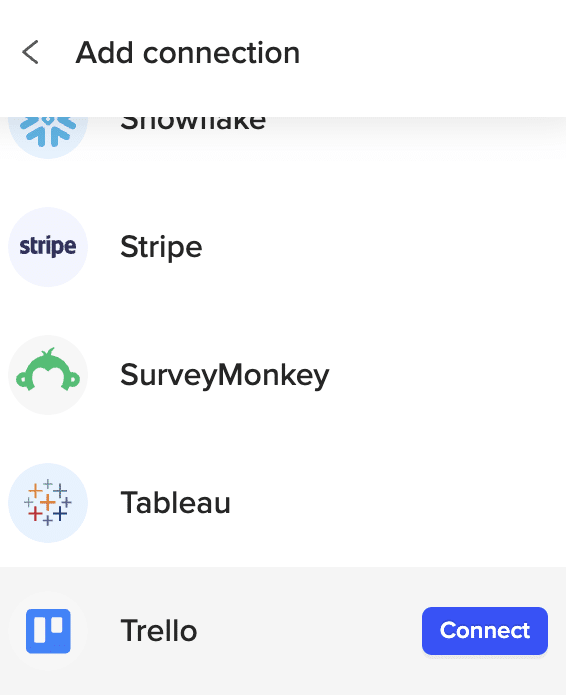
You’ll need your API token to continue. Select ‘Click here’ to grab it.
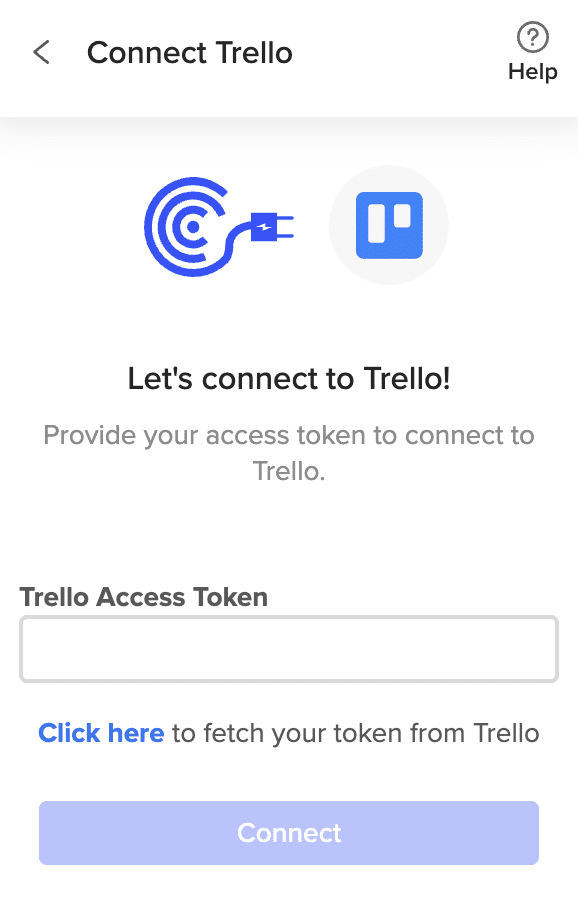
Click ‘Allow’ to grant Coefficient access to your Trello account.

Copy the generated token.

Paste your API token into Coefficient and click ‘Connect.’
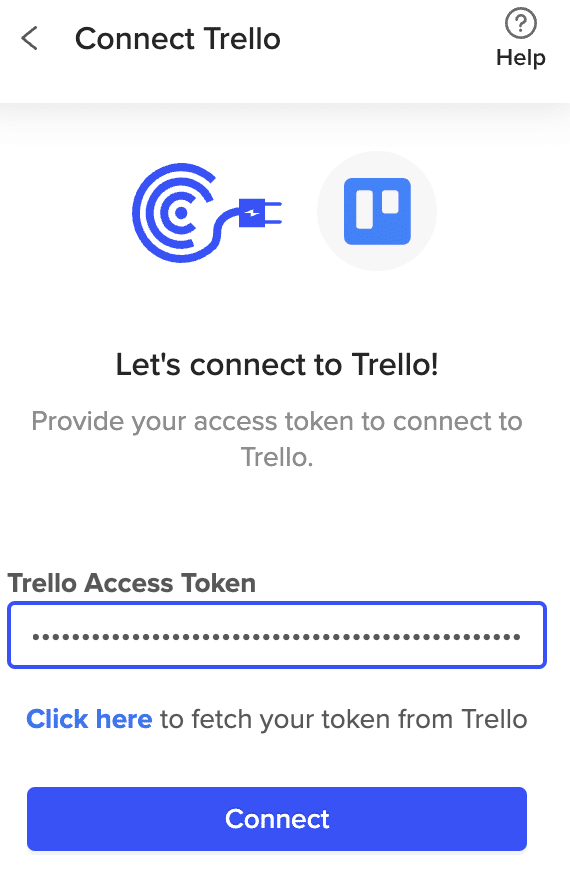
Step 3: Export Trello Data to Excel
Click ‘Start from Scratch.’
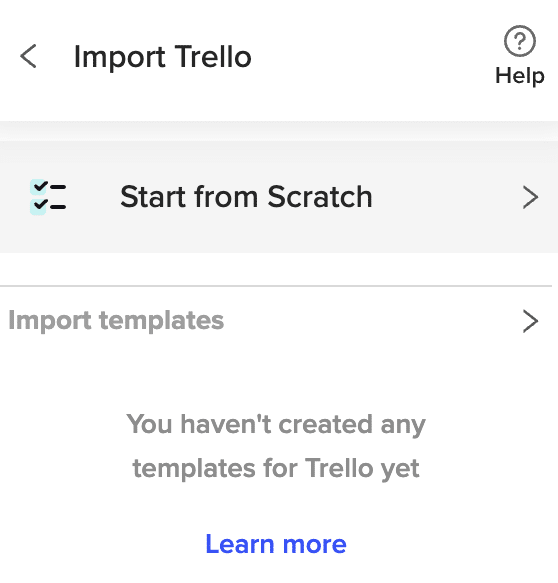
Review the list of available data sources in Coefficient’s Import preview window. To create a custom endpoint, choose from Cards in a Board, Lists, or Workspaces.
To Fetch Trello Workspaces Data:
Select ‘Get Workspaces’ to continue.
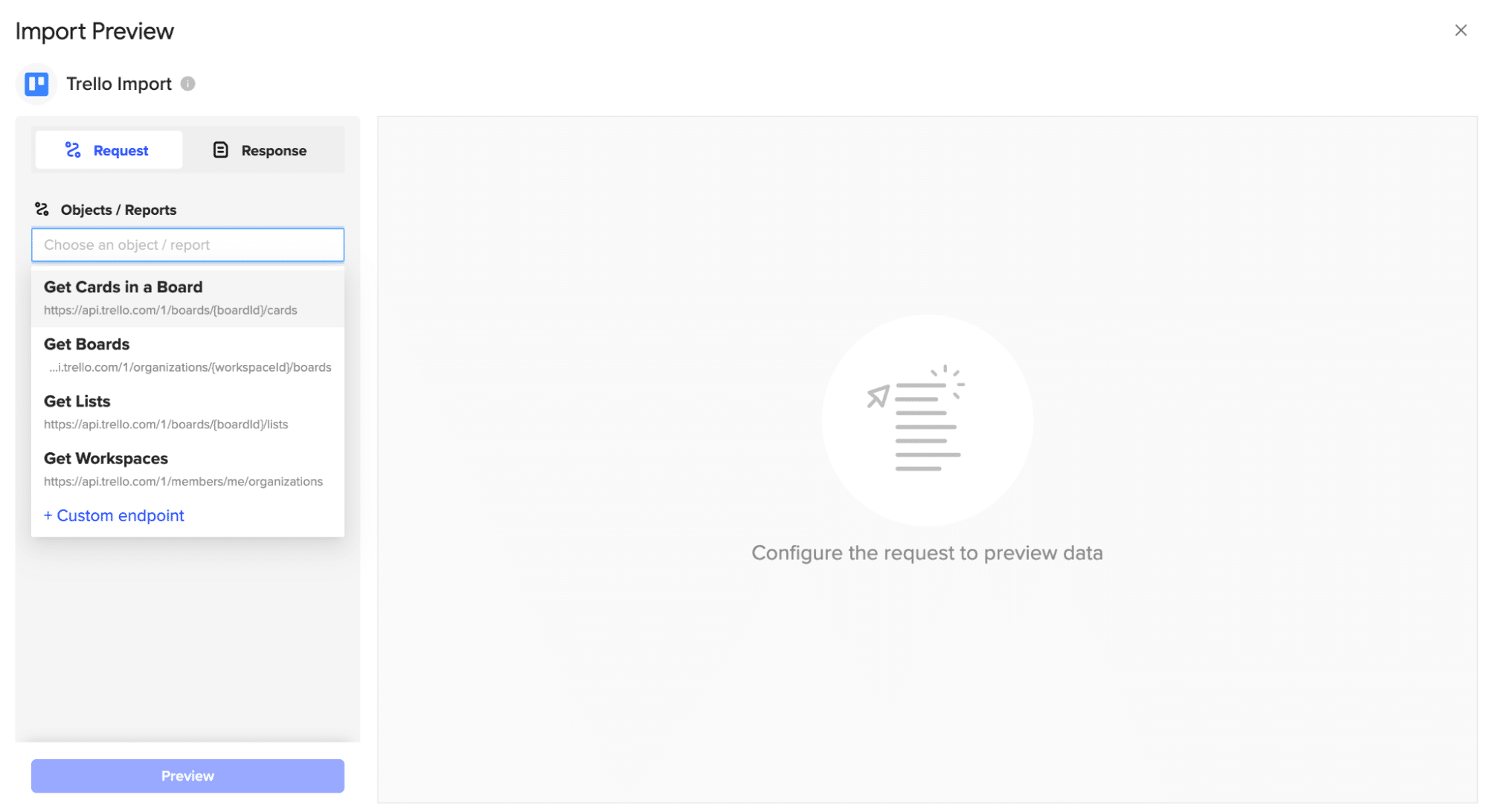
Adjust the import settings and click ‘Import’ to fetch the list of Trello workspaces.
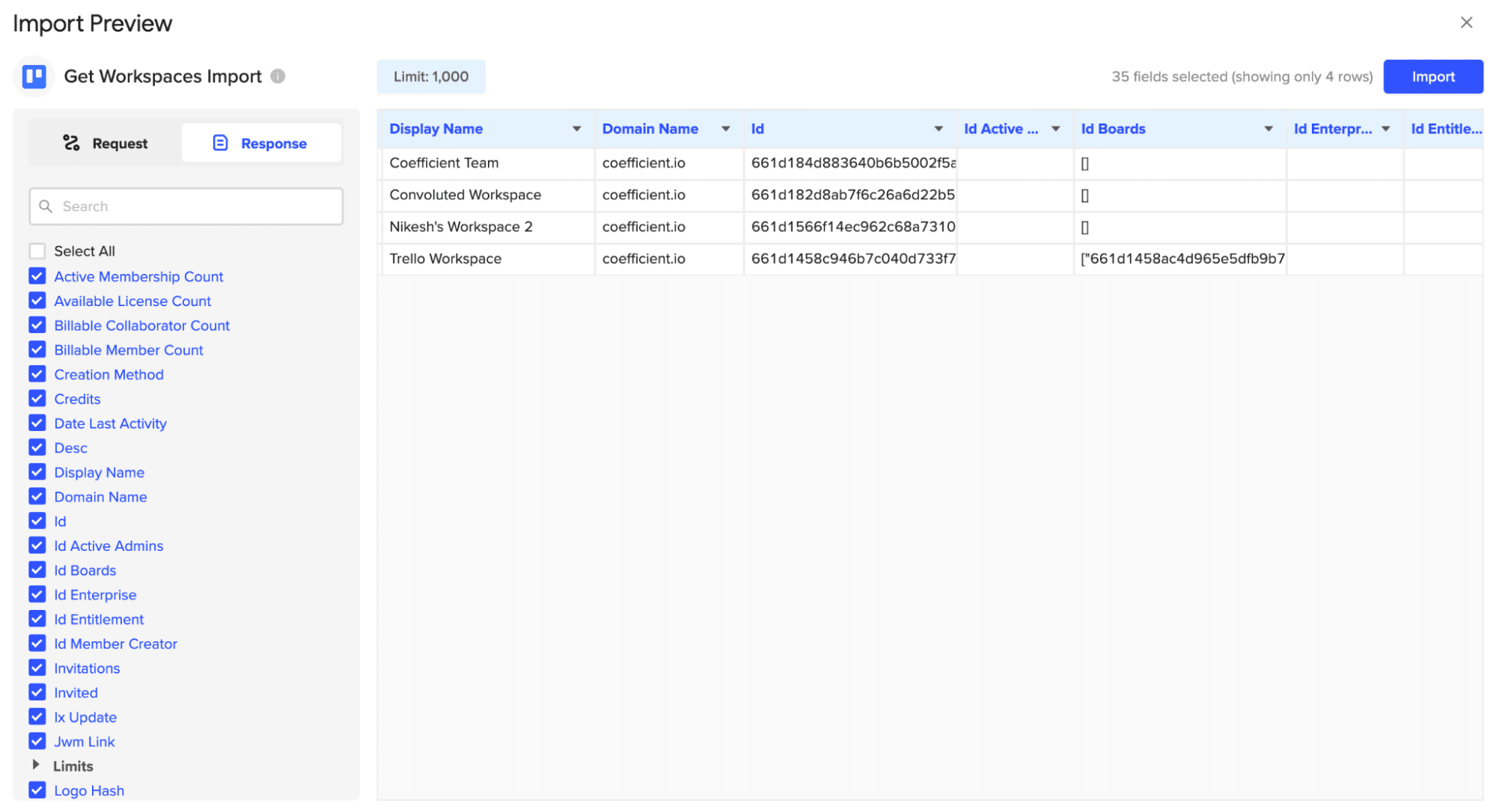
Review the imported workspace data in your Excel workbook.
Method 2: Manual CSV Export
Trello allows you to export board data in CSV format, which can then be imported into Excel. This method provides a quick way to get a snapshot of your Trello data into a spreadsheet. However, keep in mind that you’ll need to manually repeat the export process each time you want to update the data in Excel.
Pros:
- Simple and straightforward process
- Doesn’t require any additional tools or integrations
- Suitable for one-time exports or infrequent updates
Cons:

Stop exporting data manually. Sync data from your business systems into Google Sheets or Excel with Coefficient and set it on a refresh schedule.

- Manual process that can be time-consuming for frequent updates
- Requires manually importing the CSV file into Excel each time
- No automatic syncing of data between Trello and Excel
Step-by-Step Tutorial
- Open Your Trello Board: Navigate to the Trello board you want to export data from.
- Click on “Menu”: Find the “Menu” button at the top right corner of the board.
- Select “More”: From the dropdown menu, select the “More” option.
- Choose “Print and Export”: In the submenu, click on “Print and Export.”
- Select “Export CSV”: Choose the “Export CSV” option to download the board data as a CSV file.
- Import into Excel: Open Microsoft Excel and create a new workbook. Go to Data > Get External Data > From Text, choose the downloaded CSV file, and follow the import wizard to import the data into Excel.
Method 3: Zapier
Zapier is a popular automation tool that allows you to connect Trello with Excel, enabling automated data export. With Zapier, you can set up a “Zap” that triggers whenever new data is added to Trello and automatically sends that data to an Excel spreadsheet.
Pros:
- Provides a basic level of automation for exporting Trello data to Excel
- Suitable for users who are already familiar with Zapier and prefer its interface
Cons:
- Requires a separate Zapier account and may incur additional costs based on the plan
Step-by-Step Tutorial
Step 1. Set up a Zapier Account: If you don’t have one already, sign up for a Zapier account at zapier.com.
Step 2. Create a New Zap: Click on “+ Create Zap” in your Zapier dashboard.
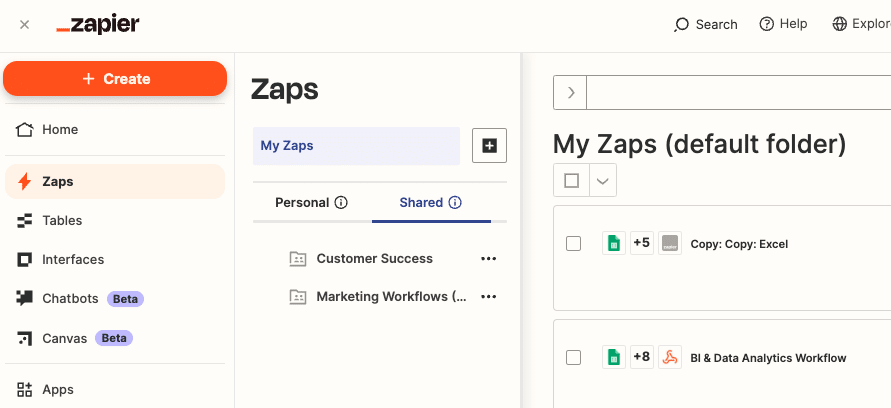
Step 3. Choose Trello as the Trigger App: Search for “Trello” and select it as the trigger app. Choose the specific trigger event, such as “New Card” or “New Activity”.
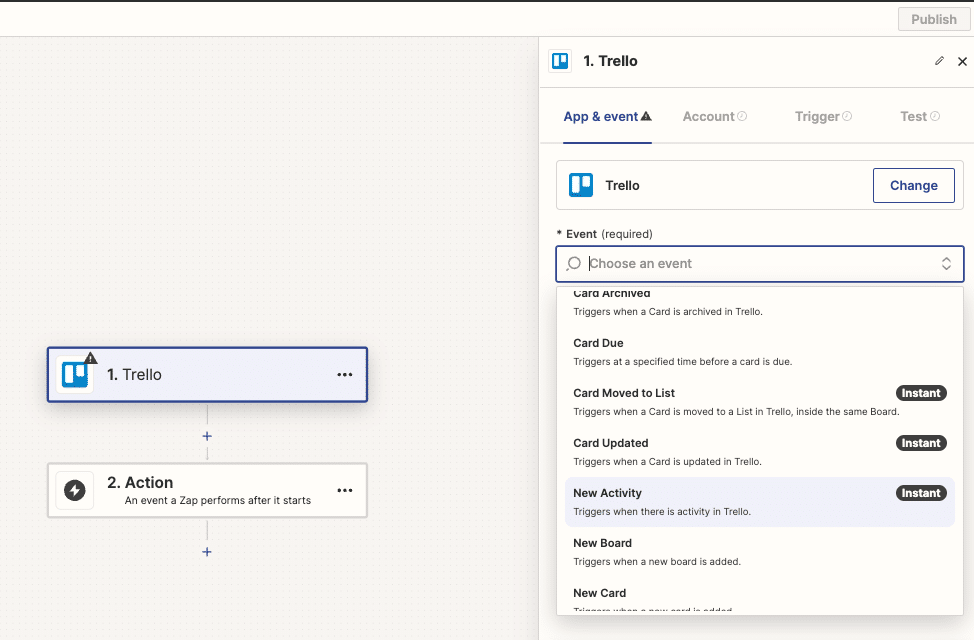
Step 4. Connect Your Trello Account: Follow the prompts to connect your Trello account to Zapier.
Step 5. Set up the Trigger: Customize the trigger settings, such as specifying the Trello Board and List you want to export data from.
Step 6. Choose Excel as the Action App: Search for “Excel” and select it as the action app. Choose the specific action event, such as “Create Spreadsheet Row”.
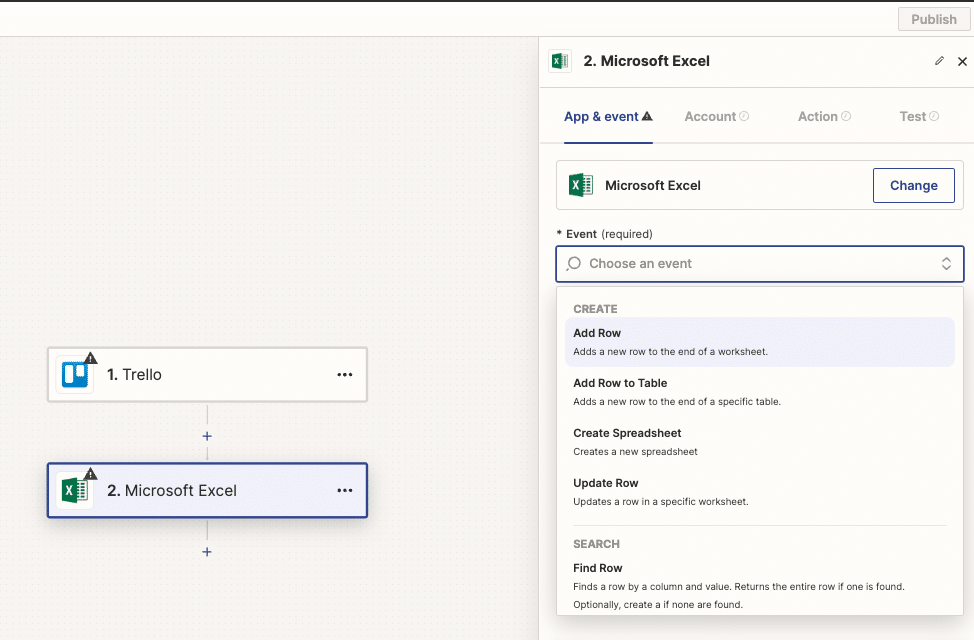
Step 7. Connect Your Excel Account: Follow the prompts to connect your Excel account to Zapier.
Step 8. Set up the Action: Map the Trello data fields to the corresponding columns in your Excel spreadsheet. Customize the spreadsheet settings as needed.
Step 9. Test and Activate the Zap: Test your Zap to ensure it’s working properly. If everything looks good, activate the Zap.
Seamlessly Export Trello Data to Excel
Exporting Trello data to Excel opens up a world of advanced reporting, analysis, backup, and more. The method you choose depends on your needs.
With Coefficient, you can finally put your Trello project data to work. Build custom reports and dashboards, analyze KPIs and metrics, and combine Trello with data from apps like Jira, Asana, and more.
Start a free Coefficient trial and experience the power of automated Trello reporting.


